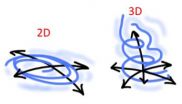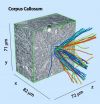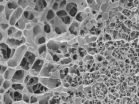(Press-News.org) Fostering and improving medical research education is crucial to biomedical research and clinical patient treatment, and as such it has been identified as the main challenge in every joint European Science Foundation (ESF) - European Research Medical Councils (EMRC) strategy report. A new policy report entitled "Medical Research Education in Europe" has just been published looking at crucial factors to improve medical research education throughout Europe.
The new science policy briefing report features an overview of medical researchers' training across Europe. It identifies good practices and main trends, pointing at the current key barriers to excellence, and making practical recommendations to all stakeholders involved in the public and private sectors.
The recommendations include measures aimed at achieving improved recruitment and early involvement in and acknowledgement of research, improved curricula incorporating multidisciplinary skills, harmonised and high quality common standards that enable much more mobility, better access to cutting-edge research infrastructure and resources, and more synergy among all stakeholders, from the individual to institutions and governments.
"This outstanding report crystalizes the need to improve medical researchers training and continuous education" said Martin Hynes, Chief Executive of the European Science Foundation. "Europe must strengthen its research career development systems to reposition itself strongly in the international arena. As we invest heavily in medical education, we need to ensure an optimal return from that. There is also the need for a wider search for talent than the vertically designed systems found in most countries. I am confident this report will have an impact on those with the power to change things".
"Medical Research education is heterogeneous in Europe -- said Giovanni Pacini, Chair of this SPB -- and poses challenges when attempting to mutually recognize individual qualifications. This SBP shows that several European countries adhere to an overall similar template, but with criteria, programmes and features that are quite different. Our report aims to summarize the key features of selected European Countries to provide a wide picture of the situation of medical research education in our Continent".
Medical research education is a vital component of the modern healthcare enterprise that improves patients' lives, generates innovations through new discoveries and inventions, and activates our economy. In the face of global competition for talent and resources, and the unprecedented challenges set forth by new demographic, social and epidemiological changes, Europe must take on board all relevant stakeholders to take firm and coordinated steps in terms of programme reforms, updated governance structures, ambitious policy measures, and forward-looking resource allocations to overcome these barriers and improve medical research education for the long-term.
###The Science Policy Briefing resulted from feedback from a wide network of world-class experts in this field and includes detailed case studies on a selected group of countries in Europe. For a copy of the report, please click on this link or contact esf@kaizo.co.uk.
Notes to editors
For more information, please contact
Emma Knott, Kaizo
+44 (0) 207 3176 4715
Emma.knott[at]kaizo.net
About ESF
The European Science Foundation (ESF) is an independent, non-governmental organisation that promotes collaboration in scientific research, funding of research and science policy across Europe. Its members are 79 national funding and research-performing organisations and learned societies from 30 countries. www.esf.org
About EMRC
The European Medical Research Councils (EMRC) is the European Science Foundation's membership organisation for all medical research councils in Europe. The mission of the EMRC is to promote innovative medical research and its clinical application towards improved human health. EMRC offers authoritative strategic advice for science policy making, research management, ethics, and better health services. In its activities, EMRC serves as a voice of its Member Organisations and the European scientific community. EMRC disseminates knowledge and promotes the socio-economic value of medical research to the general public and the decision makers. http://www.esf.org/nc/research-areas/medical-sciences.html
Improving medical research education across Europe
2012-10-23
ELSE PRESS RELEASES FROM THIS DATE:
Leading European experts call for more rigorous scientific evidence for healthcare interventions
2012-10-23
Leading clinicians and health researchers from across Europe say much greater emphasis must be placed on the scientific evidence for the effectiveness of treatments and other healthcare interventions to ensure patients receive the best care available. The call is contained in a Science Policy Briefing published by the European Medical Research Councils, which also made ten key recommendations on how to improve the quality of research and healthcare in Europe.
The briefing, 'Implementation of Medical Research in Clinical Practice', says that there must be much greater ...
Biologists record increasing amounts of plastic litter in the Arctic deep sea
2012-10-23
Biologists record increasing amounts of plastic litter in the Arctic deep sea: studies confirm that twice as much marine debris is lying on the seabed today compared to ten years ago
Bremerhaven, 22nd October 2012. The seabed in the Arctic deep sea is increasingly strewn with litter and plastic waste. As reported in the advance online publication of the scientific journal Marine Pollution Bulletin by Dr. Melanie Bergmann, biologist and deep-sea expert at the Alfred Wegener Institute for Polar and Marine Research in the Helmholtz Association. The quantities of waste observed ...
Next-generation vaccines -- eliminating the use of needles
2012-10-23
Lead scientist Professor Simon Cutting, from the School of Biological Sciences at Royal Holloway, has developed the jabs through the use of probiotic spores. He carried out fundamental studies into the biology of the bacterium Bacillus subtilis which attracted the attention of microbiologists due to its ability to form spores that can last millions of years before germinating under the appropriate environmental conditions.
Professor Cutting says: "The mechanisms by which this process occurs have fascinated microbiologists for decades making it one of the most intensively ...
Turbulent flows in 2D can be calculated in new model
2012-10-23
Turbulent flows have challenged researchers for centuries. It is impossible to predict chaotic weather more than a week in advance. Wind resistance on a plane or a car cannot be calculated precisely, since it is determined by atmospheric turbulence. Now, however, researchers from the Niels Bohr Institute have succeeded in developing a statistical model that can replicate the chaotic flows and thereby provide a better understanding of the process. The research results are published in the scientific journal, Physics of Fluids.
"Without knowing the movements in detail, we ...
Quantum computing with recycled particles
2012-10-23
A research team from the University of Bristol's Centre for Quantum Photonics (CQP) have brought the reality of a quantum computer one step closer by experimentally demonstrating a technique for significantly reducing the physical resources required for quantum factoring.
The team have shown how it is possible to recycle the particles inside a quantum computer, so that quantum factoring can be achieved with only one third of the particles originally required. The research is published in the latest issue of Nature Photonics.
Using photons as the particles, the Bristol ...
A circuit diagram of the mouse brain
2012-10-23
This press release is available in German.
What happens in the brain when we see, hear, think and remember? To be able to answer questions like this, neuroscientists need information about how the millions of neurons in the brain are connected to each other. Scientists at the Max Planck Institute for Medical Research in Heidelberg have taken a crucial step towards obtaining a complete circuit diagram of the brain of the mouse, a key model organism for the neurosciences. The research group working with Winfried Denk has developed a method for preparing the whole mouse ...
Lung mucus gel scaffold prevents nanoparticles from getting through
2012-10-23
Mucus coats our airways' internal surfaces. The viscous gel humidifies the lungs and prevents viruses and other small particles like diesel soot from entering the body unchecked. Previously unclear was the extent to which such nanoparticles are able to move through the lungs' mucus. Here, the research evidence was contradictory. Scientists could not explain why, in inhaled medication development, drug nanoparticles often simply got stuck in the mucus never making it to their target destination inside the lung cells.
Now, as part of a German Research Foundation (DFG)-funded ...
The complex association between moderate alcohol consumption and breast cancer
2012-10-23
An excellent review article from two scientists at the National Institute on Alcohol Abuse and Alcoholism in the USA to be published in Alcohol Clin Exp Res 2012, describes the epidemiologic and basic scientific evidence linking alcohol consumption to the risk of breast cancer.
The authors point out deficiencies in the epidemiologic data, especially that the pattern of drinking (regular moderate versus binge drinking) has generally not been taken into consideration, important given that binge drinking is associated with much higher blood alcohol concentrations and acetaldehyde ...
TIM and TAM: 2 paths used by the Dengue virus to penetrate cells
2012-10-23
By demonstrating that it is possible to inhibit the viral infection in vitro by blocking the bonding between the virus and these receptors, the researchers have opened the way to a new antiviral strategy. These works were published on line in the review "Cell Host & Microbe" of October 18, 2012.
The Dengue virus circulates in four different forms (four serotypes). It is transmitted to humans by mosquitoes. It is a major public health problem. Two billion people throughout the world are exposed to the risk of infection and 50 million cases of Dengue fever are recorded by ...
19 species of ferns named for Lady Gaga
2012-10-23
DURHAM, N.C. -- Pop music megastar Lady Gaga is being honored with the name of a new genus of ferns found in Central and South America, Mexico, Arizona and Texas. A genus is a group of closely related species; in this case, 19 species of ferns will carry the name Gaga.
At one stage of its life, the new genus Gaga has somewhat fluid definitions of gender and bears a striking resemblance to one of Gaga's famous costumes. Members of the new genus also bear a distinct DNA sequence spelling GAGA.
Two of the species in the Gaga genus are new to science: Gaga germanotta from ...


